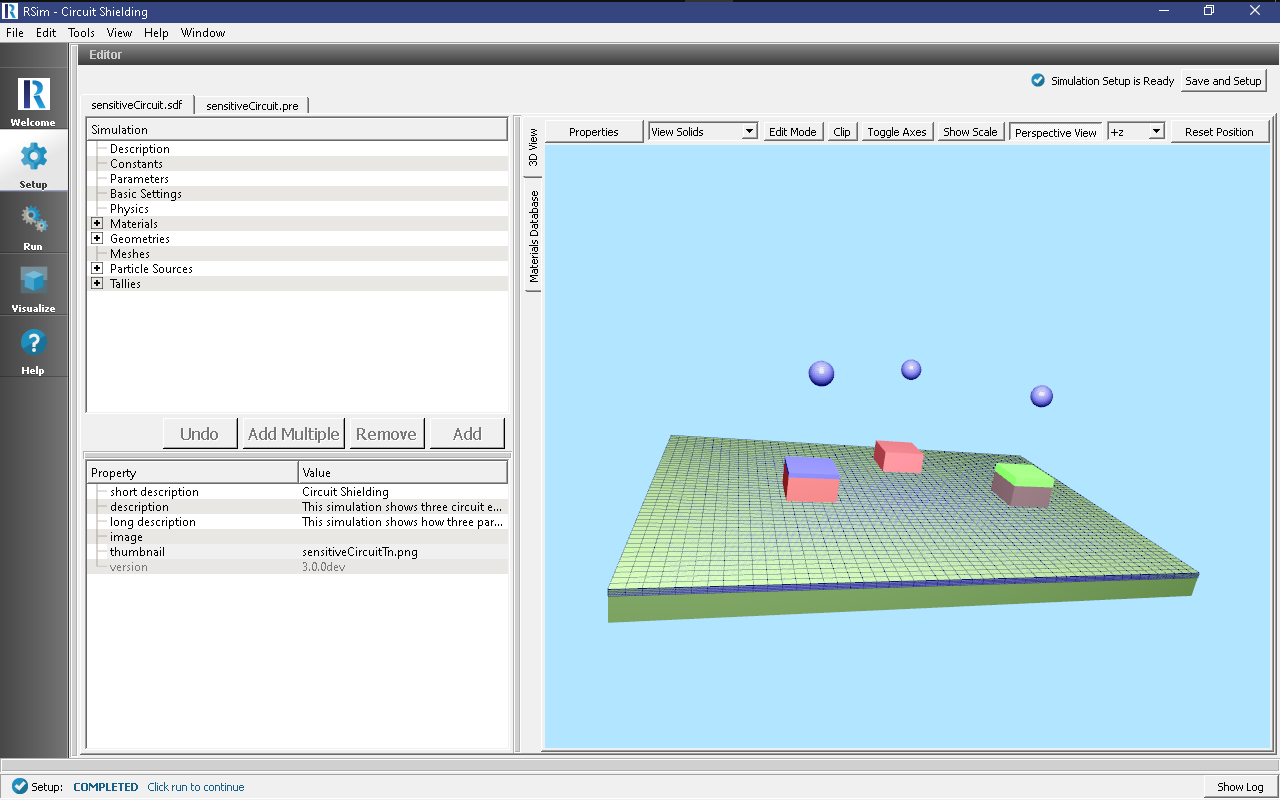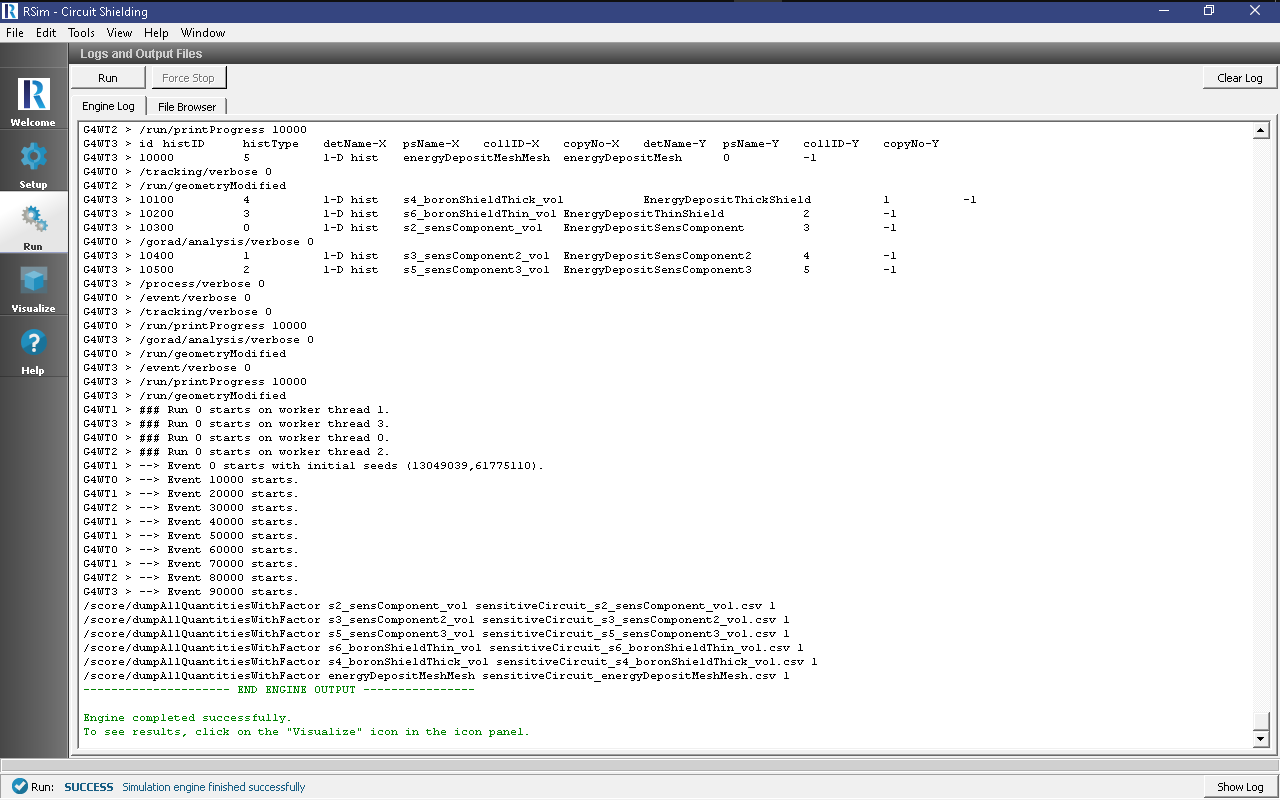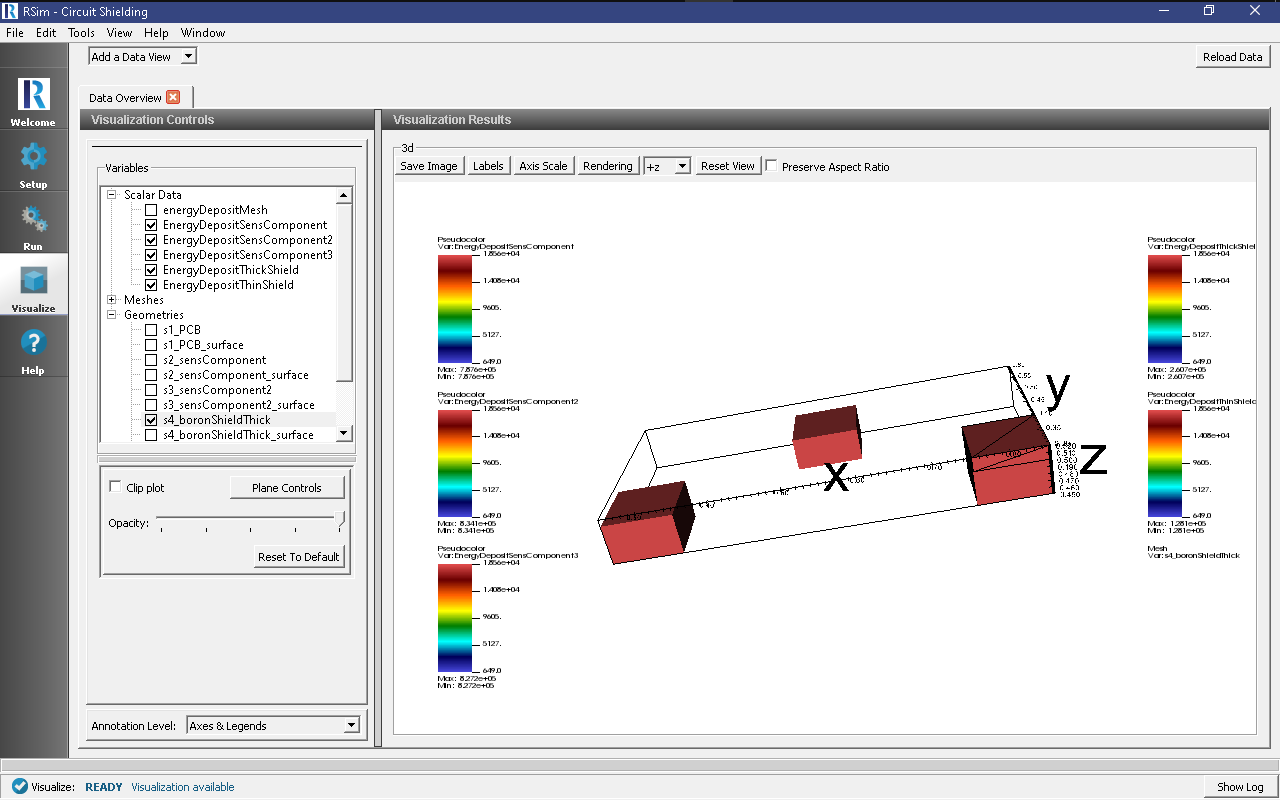Circuit Shielding
Keywords:
-
radiation, GORAD, shielding, Dose Deposit
Problem Description
This problem demonstrates how the Deposited Dose on an integrated circuit may be reduced through the use of boron shielding.
To do this, three simplified integrated circuits modeled as silicon boxes are placed on a FR-4 substrate. One of the silicon boxes is shielded by a thick box of boron, one is shielded by a thin box of boron, and one is unshielded.
Opening the Simulation
The Sensitive Circuit example is accessed from within RSim by the following actions:
- Select the New → From Example… menu item in the File menu.
- In the resulting Examples window expand the RSim for Basic Radiation option.
- Expand the Basic Examples option.
- Select Circuit Shielding and press the Choose button.
- In the resulting dialog, create a New Folder if desired, and press the Save button to create a copy of this example.
All of the properties and values that create the simulation are now available in the Setup Window as shown in Fig. 72. You can expand the tree elements and navigate through the various properties, making any changes you desire. The right pane shows a 3D view of the geometry, if any, as well as the grid, if actively shown.
Note that several custom materials created through RSim are available for material assignment.
Simulation Properties
This example demonstrates how Dose Deposit is impacted by the thickness of a boron shield.
Under the Basic Settings tab the number of events to be simulated can be selected, as well as the simulation model. Right now the only supported model is GORAD.
The Shielding hadronic physics list is used for this simulation, with GEANT4 standard cuts at 0.7 um.
Three point particle sources are placed above our three test coupons, which are on the PCB substrate. Each particle source has only a 1 degree angular distribution in order to prevent them from interfering with each other. Remember that zero degrees corresponds to the negative Z direction. The neutrons are emitted at a monoenergetic 14 MeV.
An energy deposit tally is placed for each of the three sensitive components, as well as each shield. In addition there is a mesh tally placed over the entire PCB substrate.
Running the Simulation
After performing the above actions, continue as follows:
- Proceed to the Run Window by pressing the Run button in the left column of buttons.
- To run the file, click on the Run button in the upper left corner of the Logs and Output Files pane. You will see the output of the run in the right pane. The run has completed when you see the output, “Engine completed successfully.” This is shown in Fig. 73.
Visualizing the Results
After the simulation is completed it is possible to visualize the energy depostion as shown in Fig. 74.
- Expand Scalar Data
- Check all of the energy deposit tallies
- Expand Geometries
- Select s4_boronShieldThick
Further Experiments
You can increase the thickness of Boron layer from 1cm to 5cm or 10cm and notice the reduction of the energy deposited into the sensitive part under the layer.
By changing the material used in the protective layer (for example, to Aluminum), this reduction in dose can be changed.


